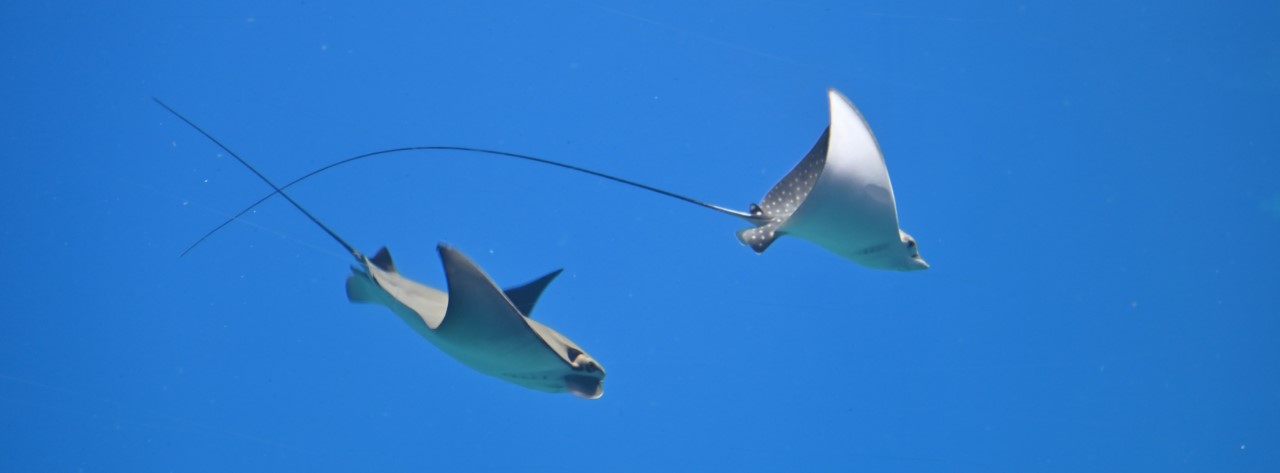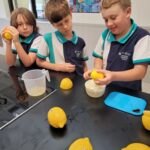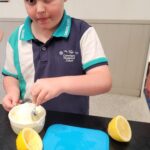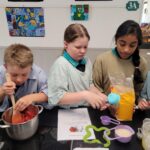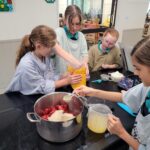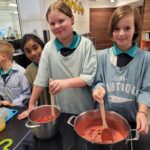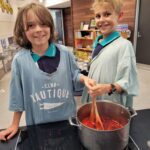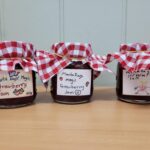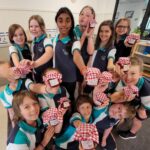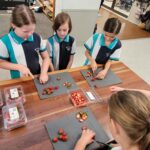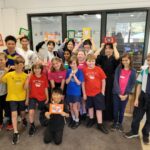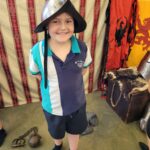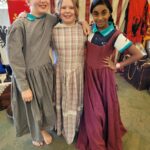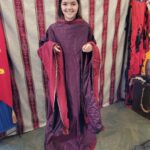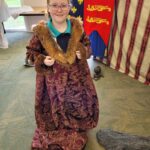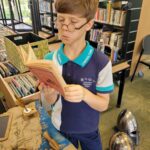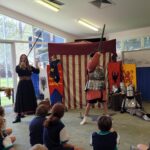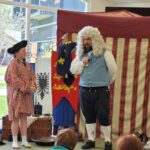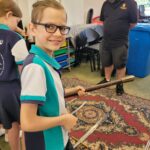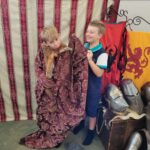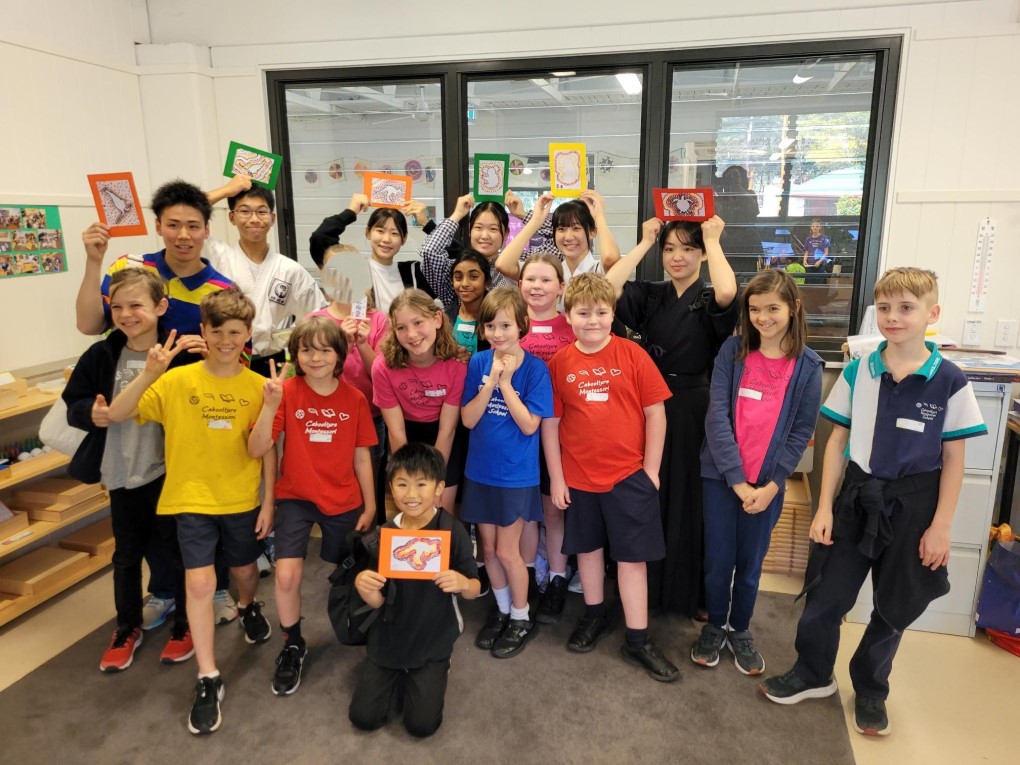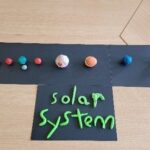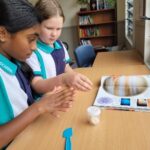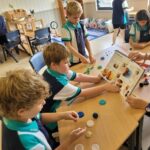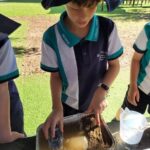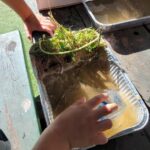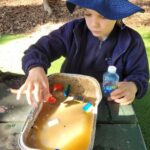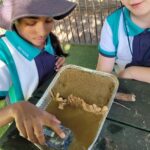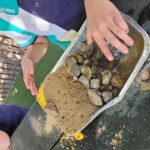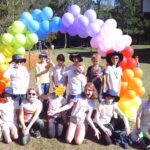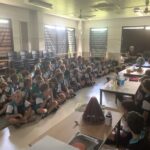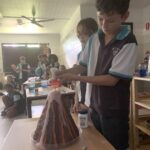Term 2 - 2024 Manta Rays
Fun with light refraction!
Our focus this semester was Maria Montessori’s First Great Story: the Coming of the Universe and the Earth. One area of study was how light travels. The students experimented with the refraction of light and observed how light rays bend as they pass from air to water, changing slightly the path of the rays. They observed how objects seemed distorted and recorded what they saw.
The ‘Manta Rays’ students also experimented with the refraction of light from air to glass and observed how white light passing through a prism bends at different angles and separates, allowing seven colours to be seen.
The Manta Rays study Science whilst Cooking!
What better way to illustrate different States of Matter and what ‘chemical and physical changes’ are than by making biscuits?
The students thoroughly enjoyed making ANZAC biscuits to commemorate ANZAC Day. They discussed the physical changes they observed while preparing the biscuits, for example by melting the butter which was converted from its solid to a liquid state. They also saw the chemical changes of the ingredients which, once baked, turned into delicious biscuits. Well done, Manta Rays!
More fun with Science!
With our work on the States of Water, the ‘Manta Rays’ students were mesmerized at our science experiment recreating the phases of the water cycle. As boiled water was poured into the glass jar, mixing with the soil, the students observed how the water started to evaporate and became water vapour. Then, they saw how the water vapour rose to the top of the jar. The ice cubes placed on top helped the water vapour to cool down and to quickly condense back into a state of liquid. The students were fascinated to see how the small water droplets dripped (precipitated) into the container placed inside the glass jar. They were also surprised at how clear the water was. Science is fun at CMS!
Cloud Art
In our study of Meteorology, the students learnt facts about some of the cloud formations that we can sometimes see at CMS. The students enjoyed cloud spotting and created their own clouds using shaving cream, glue, cotton and white pencil.
Term 4 - 2023 Manta Rays
Strawberry Jam, YUM!
Term 4 was a really busy and fun! The Manta Rays had the opportunity to work through all the necessary steps to make delicious strawberry jam. The students were engaged with the cleaning, cutting and weighing of the strawberries. They squeezed some lemons and measured the correct amount of sugar needed for all the jars. Each student designed their own label and added a cloth cover. Great skills learnt and practised!
Living History Incursion
In the last week of Term 4, the Manta Rays joined the Otters for an amazing travel back into medieval times. The students tried on some of the medieval attire of Europe and learnt about what it was like to be a knight and what it took to be working as a crewman on a ship during the Age of Exploration. A truly memorable day!
Term 3 - 2023 Manta Rays
Konnichiwa from the Manta Rays Class!
It was wonderful having Japanese students visit our Manta Rays classroom in August. We had practised writing our name in Japanese and had learnt to say a few things in their language. They were impressed and tried their best at speaking English. We enjoyed doing an art activity with them. Thank you for visiting our class!
Term 2 - 2023 with the Manta Rays
What a busy first semester we have had in the new Manta Rays class, especially with our science and geography learning activities!
In Term 1, the children enjoyed reviewing their prior knowledge of the creation of the Universe by listening to the Montessori First Great Story, presented by the Cycle 3 Seniors. The students were eager to learn more about the different planets and dwarf planets of our Solar System. The children compared them according to their size, mass and composition. They discovered that while some are rocky planets like our Earth, others are gas giants (made mainly of hydrogen and helium) or “icy” giant (hot, dense fluid of icy material – water/methane/ammonia). To finish our short study of planets, the children worked on creating the planets (not to scale), the moon and even the dwarf planet Pluto using playdough. It was great fun!
After learning about the phases of the Moon, the children looked into the different layers of Earth. They were fascinated about how deep the centre of Earth is, and how “thin” the crust is in comparison. The children studied how volcanic eruptions have changed the Earth’s surface and landscape over millions of years. They enjoyed comparing the features of the main three types of volcanoes: Composite (stratovolcano), Shield and Cinder Cone. Did you know that there are dormant and extinct volcanoes as well as lava fields in Queensland?!!
As a follow-up, we studied how the Glass House Mountains were formed and found out that they are not volcanoes, but intrusive plugs – remnants of volcanic activity – which were formed approximately 25-27 million years ago. How amazing to learn that over millions of years of erosion of the softer sandstone rocks around them, the Glass Mountains became more and more visible! We can even see one of them from our school!
In Term 2, we continued with our science and geography lessons, learning about weathering and erosion. As we studied the effects of erosion on the local coastline and beaches, we enjoyed experimenting and recreating the effects of beach erosion. We looked at the different natural (dunes, trees, plants) and man-made (rock wall, fencing) ways to prevent erosion. One experiment showed how buildings can easily collapse into the ocean over time.
We finished Semester 1 by taking part in the Colour Run, with all having a great time! Happy holidays everyone!
Term 1 - 2023 with the Manta Rays
Last week our senior classes, including the Manta Rays, came together for an awe-inspiring story-telling session about the first Great Montessori Story. There are five great ‘Great Stories’ which help teach our Manta Ray students about some big life questions. In last week’s session about the first Great story, the students heard about the vastness of space, the solar system, and how the Earth formed from particles into solids, liquids and gas, and then arranged itself into layers according to the Law of Gravity. Let’s wait and see what the next Great Story teaches!

